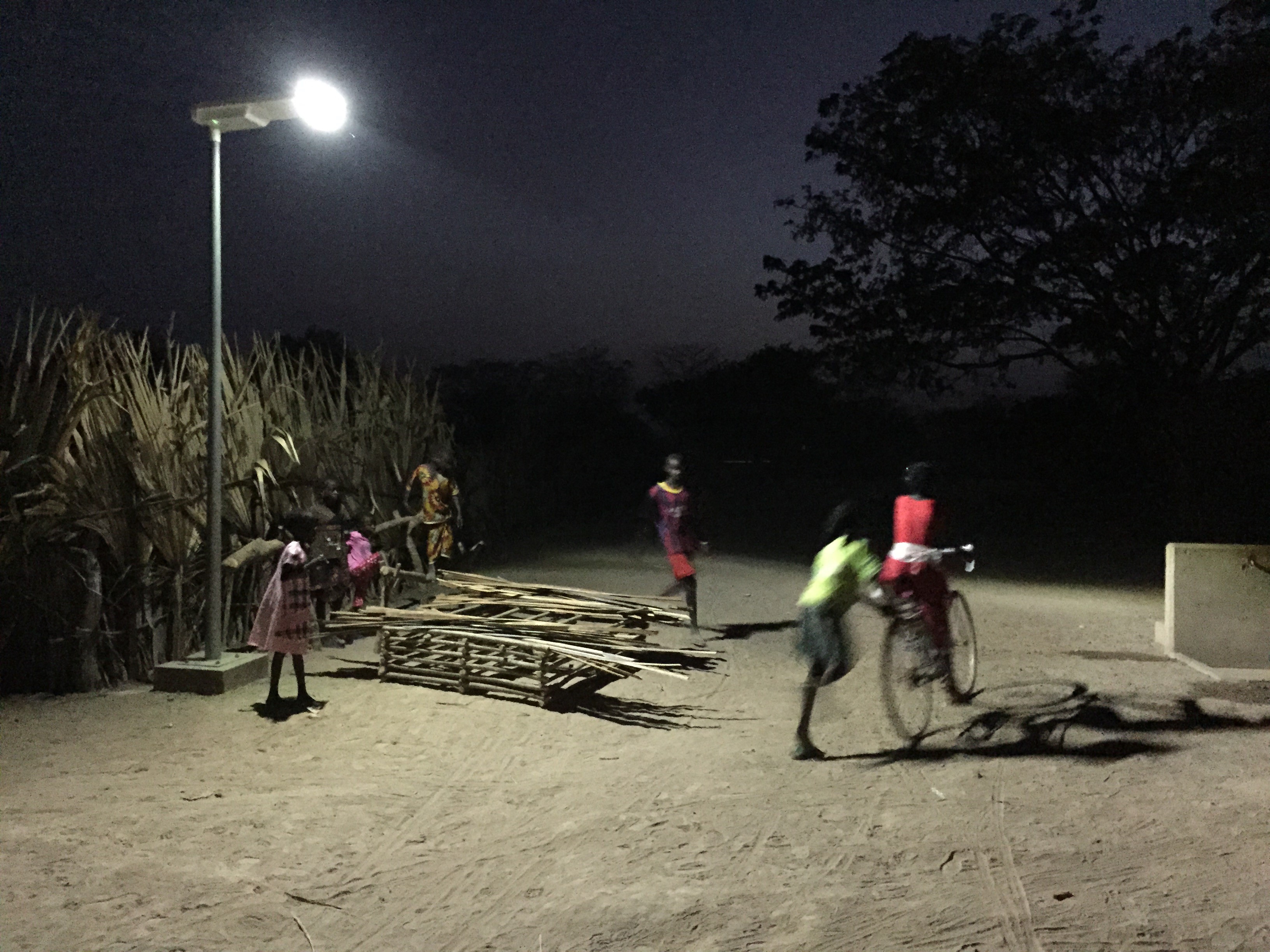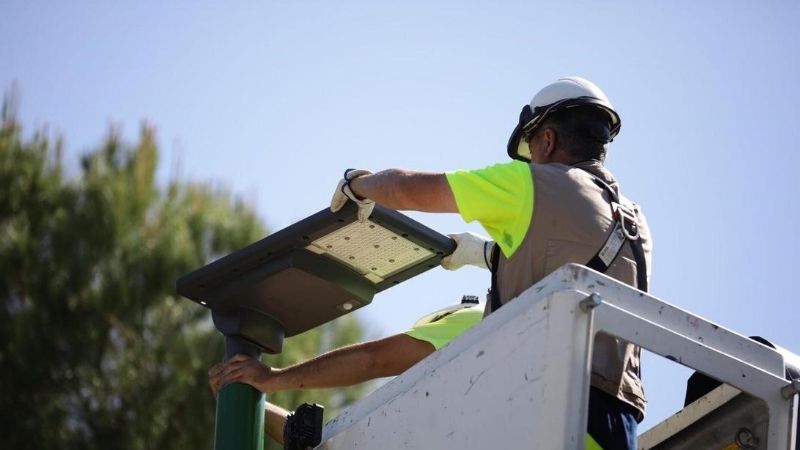Embarking on the journey to illuminate rural landscapes with solar street lights is an exciting venture. In the ever-evolving landscape of renewable energy, mastering the intricacies of rural solar street light setups is crucial for ensuring efficiency, sustainability, and lasting impact. As the demand for eco-friendly illumination in remote areas continues to surge, it becomes paramount for you to stay ahead of the curve. Your success hinges on a comprehensive understanding of the key factors that shape a robust setup. Join us as we uncover the essential seven considerations that can make or break a rural solar street light installation.
Factors to consider in a rural solar street light installation
What should you keep in mind before you begin your installation?
Solar Resource Assessment
This involves evaluating the available sunlight at a specific location to determine the solar energy potential. For rural solar street light setups, this step is pivotal in designing systems that harness maximum energy and operate efficiently, even in remote areas. Take charge of your installation process by actively engaging in on-site surveys. Assess the landscape, shading, and solar exposure to optimize the positioning of street lights for maximum sunlight absorption. This proactive approach ensures that you account for local conditions, resulting in a more reliable and resilient system.
Equip yourself with the latest solar irradiance sensors to accurately measure the sunlight intensity at your installation sites. These cutting-edge technologies provide real-time data, allowing you to make informed decisions and optimize your solar street light configurations actively. Integrate weather monitoring systems into your installations to track seasonal variations, ensuring your solar street lights adapt dynamically to changing environmental conditions.
Implement active monitoring systems that continuously analyze solar resource data. By staying proactive, you can identify patterns, anticipate challenges, and fine-tune your installations for optimal energy production. Utilize advanced performance modeling tools to simulate various scenarios and optimize your solar street light setup. This active modeling approach empowers you to predict system behavior, identify potential issues, and enhance overall performance.
Site Selection
Begin your site assessment by thoroughly evaluating sunlight exposure. Identify locations with minimal shading obstacles to ensure uninterrupted access to sunlight throughout the day. Solar panels depend on direct sunlight to generate optimal power, so choose areas with clear, unobstructed paths for sunlight penetration. Utilize tools like solar path finders and shade analysis software to accurately assess potential shading concerns and optimize the solar street light system’s overall performance.
Factor in the geographical features of the installation site. Analyze the terrain, slope, and elevation to determine how they might impact sunlight exposure and system efficiency. A flat, elevated surface is ideal for maximizing solar panel efficiency and minimizing installation challenges. Additionally, consider the local climate and weather patterns to anticipate any environmental factors that could affect the solar street light’s performance over time.

Battery Storage Capacity
In solar street lighting, the battery serves as the heartbeat of the entire system. Its storage capacity directly influences the system’s ability to store and dispense energy during periods of low or no sunlight. The larger the battery storage capacity, the more energy can be collected and stored, ensuring uninterrupted illumination throughout the night. This is particularly vital in rural settings where consistent, reliable lighting is paramount for safety and security.
In your installation endeavors, consider opting for advanced battery technologies that offer not only substantial storage capacity but also enhanced durability and rapid charge-discharge cycles. Lithium-ion batteries, for instance, have emerged as a game-changer, providing a compact yet potent solution to meet the demanding requirements of solar street lighting in remote locations.
To truly master the art of solar street light installations, treat battery storage capacity as the linchpin of your design. By meticulously selecting and integrating high-capacity batteries, you empower your installations to weather the challenges of rural environments, ensuring that every corner of the community remains bathed in the glow of sustainable, solar-powered light.
Energy Efficiency of LED Lights
What are the crucial roles of an LED light in a solar street light?
- Illuminate with Precision: LED lights are the undisputed champions when it comes to energy efficiency. By actively converting a higher percentage of electricity into visible light, they outshine traditional lighting technologies. This luminous efficiency not only ensures brighter streets in rural areas but also optimizes the utilization of solar-generated power. Choosing LED lights is a strategic move towards harnessing maximum brightness with minimal energy consumption.
- Solar Synergy at its Best: The symbiotic relationship between LED lights and solar power is the cornerstone of a successful rural street light setup. LED lights operate seamlessly on low-voltage DC power, aligning seamlessly with the direct current output of solar panels. This synergy results in a highly efficient and sustainable lighting solution. In the active pursuit of energy efficiency, LED lights become the linchpin in ensuring that the harvested solar energy is utilized optimally, paving the way for cost-effective and eco-friendly installations.
- Extended Lifespan, Reduced Hassles: Another compelling reason to prioritize LED lights in your solar street light installations lies in their extended lifespan. The active management of power and heat within LED technology contributes to a significantly longer operational life compared to traditional lighting sources. This not only reduces the frequency of replacements but also minimizes maintenance hassles in remote rural locations. The incorporation of LED lights becomes a strategic move to ensure the longevity and reliability of your project.
- Finetune with Intelligent Controls: Elevate your installations to a new echelon by incorporating intelligent controls that actively manage LED lighting systems. Implementing smart technologies allows for precise control over brightness levels, adaptive dimming, and scheduling, ensuring that energy is expended only when and where it is truly needed. This active approach to control enhances the overall efficiency of the solar street lighting setup, making it a smart investment for both you and the communities you serve.

Weather Conditions
The solar panel orientation and tilt angle play a pivotal role in maximizing energy absorption from the sun. In regions prone to inclement weather, such as heavy rainfall or snowfall, ensuring the panels are angled to shed water or snow is crucial. Additionally, periodic checks and adjustments based on seasonal variations can optimize energy capture, ensuring the system operates at peak efficiency throughout the year.
Battery life is another critical consideration influenced by weather conditions. Extreme temperatures, whether scorching heat or freezing cold, can impact battery performance. You must select batteries with a wide operating temperature range and implement proper insulation measures to safeguard against temperature extremes. Regular monitoring and maintenance routines are essential to identify and address potential issues before they compromise the overall system functionality.
Beyond solar panel orientation and battery considerations, weatherproofing the entire solar street light setup is non-negotiable. Utilizing durable, weather-resistant materials and implementing robust seals for vulnerable components, such as connectors and junction boxes, shield the system from the adverse effects of moisture, dust, and other environmental factors. A comprehensive approach to weatherproofing ensures the longevity of the installation, reducing the need for frequent maintenance and replacement.
Maintenance and Accessibility
Routinely inspecting and cleaning solar panels is imperative. Dust, debris, and environmental factors can accumulate over time, hindering the panels’ ability to harness sunlight effectively. By proactively addressing these issues, you can ensure that the solar street lights consistently generate and store sufficient energy for reliable illumination.
Accessibility is another crucial aspect that demands your attention. Opt for strategic placement of solar street lights, making them easily accessible for routine checks and repairs. This foresight can significantly reduce downtime and maintenance costs, allowing for swift and efficient troubleshooting. Additionally, consider employing smart technology and remote monitoring systems to facilitate real-time diagnostics, enabling you to address potential issues promptly and with precision.
Community Engagement and Education
Recognize that every successful solar street light installation is a collaborative effort. Engage with the local community from the project’s inception, understanding their needs, concerns, and aspirations. Conducting community forums, workshops, and information sessions will not only disseminate crucial knowledge about the solar street light system but also build trust and rapport. By involving the community as stakeholders, you lay the foundation for a project that seamlessly integrates into the daily lives of the residents.
Education forms the bedrock of sustainable development. Craft tailored educational initiatives that cater to the specific needs of the community. Whether through pamphlets, interactive sessions, or visual aids, convey the benefits of solar energy and the intricacies of the installed system in a language and format that resonates with the local population. Empower community members with the knowledge to maintain, troubleshoot, and maximize the benefits of their solar street lights. An informed community is not just a recipient but an active custodian of the installed infrastructure.
Conclusion
Having successfully implemented numerous rural solar street light setups, we’ve honed in on pivotal factors that ensure optimal performance. As you embark on your installations, consider all the factors as crucial for success. We hope you found this guide to be insightful. Do you have any questions? Contact us.


